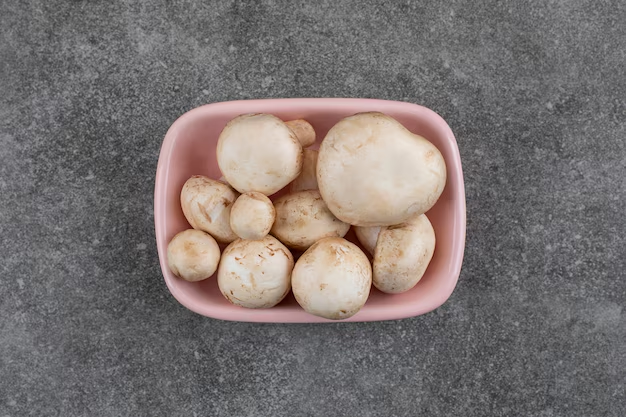Unlocking the Secrets: How Long Do Fresh Mushrooms Last in the Refrigerator? 🍄
When it comes to food preservation, understanding how and where to store your produce can make all the difference in extending its shelf life. Among the vast array of vegetables, fresh mushrooms stand out for their unique texture and earthy flavor, yet they are also notoriously quick to spoil if not stored properly. If you're wondering how long fresh mushrooms last in the refrigerator, you're in the right place. This guide will delve into the nitty-gritty of mushroom storage and provide practical insights to keep your fungi fresh for as long as possible.
The Nature of Mushrooms and Their Freshness Timeline
🍄 Understanding Mushroom Composition
Mushrooms are intriguing—that much is undeniable. Neither plant nor animal, these fungi boast a high moisture content and delicate cellular structure, making them both nutritious and surprisingly perishable. Understanding these factors is crucial to understanding how long they will keep in your fridge.
- High Water Content: Mushrooms are mainly composed of water, which contributes to their firm, yet spongy texture.
- Protein-rich: This makes them a superb meat substitute but can also lead to quicker spoilage compared to some vegetables.
⏳ Estimating Shelf Life
Assuming proper storage, fresh mushrooms can generally last between 5 to 7 days in the refrigerator. However, several factors can impact this timeframe:
- Type of Mushroom: Different varieties, such as button, shiitake, or portobello, may have slightly varying storage durations.
- Condition When Bought: Fresher mushrooms last longer. Opt for those with a firm feel and no slimy coating.
Proper Storage Techniques
🧊 Best Practices for Refrigeration
Proper refrigeration is critical to maximizing the lifespan of fresh mushrooms.
- Use a Paper Bag: Store mushrooms in a paper bag rather than a plastic one. Paper allows excess moisture to escape, reducing the chance of spoilage.
- Fridge Placement: Place them in the main compartment rather than the crisper drawer. This offers a more stable environment with consistent airflow.
- Avoid Washing Before Storing: Excess water can accelerate deterioration, so keep them dry until you're ready to use them.
🛁 To Wash or Not to Wash
When you're ready to use your mushrooms, quick rinsing is recommended:
- Avoid Soaking: Mushrooms absorb water quickly, which can make them soggy. Instead, rinse briefly under cold water and pat dry.
- Use a Damp Cloth: Alternatively, wipe them down with a damp cloth to remove dirt without excessive water exposure.
Extending Freshness: Freezing and Drying
❄️ The Freezing Option
If you find yourself with an overabundance of mushrooms, freezing is a viable option:
- Blanch Before Freezing: Briefly boiling mushrooms can preserve texture and flavor before freezing.
- Storage Tips: Freeze mushrooms on a baking sheet first; once frozen, transfer them to a sealed container or bag.
🌞 Drying Mushrooms for Longevity
Drying is another effective preservation method that enhances shelf life dramatically:
- Using a Dehydrator: Most effective for consistent results, dehydration removes moisture while maintaining most nutrients.
- Oven Method: Set your oven to a low temperature and let the mushrooms dry for several hours, turning occasionally.
Recognizing Spoilage Signs
🚨 Key Indicators of Spoiled Mushrooms
Knowing when mushrooms have gone bad is crucial to avoid health risks:
- Slimy Texture: A slippery surface often signals the beginning of decomposition.
- Dark Spots or Discoloration: These indicate decay and should be a cue for disposal.
- Foul Odor: Fresh mushrooms have a mild scent. A strong, foul smell is a definite red flag.
Related Storage Tips and Common Myths
🍄 Debunking Mushroom Storage Myths
Misunderstandings around food storage can lead to waste or even food safety issues.
- Myth: Plastic Bags Are Suitable: These trap moisture, accelerating spoilage.
- Myth: Room Temperature Storage Works: While some fruits ripen at room temperature, mushrooms need a cooler environment.
🧺 Broader Application: Storing Other Delicate Produce
While mushrooms need specific storage conditions, principles of keeping produce dry and cool apply more broadly.
- Leafy Greens: Also prefer paper over plastic and need a consistently cool environment.
- Berries: Like mushrooms, berries are sensitive to moisture and should be kept untouched until you're ready to consume them.
📝 Quick Summary & Tips for Mushroom Storage 🍄
- Use a Paper Bag: Store mushrooms in a paper bag within the main fridge compartment.
- Keep Them Dry: Washing before storage accelerates spoilage.
- Recognize Spoilage: Look for sliminess, dark spots, and odor changes.
- Freezing: Blanch before freezing to maintain texture.
- Drying: An effective long-term preservation method.
By incorporating these best practices into your food storage routine, you can successfully extend the shelf life of your fresh mushrooms and enjoy their earthy flavors for longer. Whether you're a casual cook or a culinary enthusiast, understanding the nuances of mushroom storage will empower you to make the most of this versatile ingredient. Happy cooking! 🍽️
